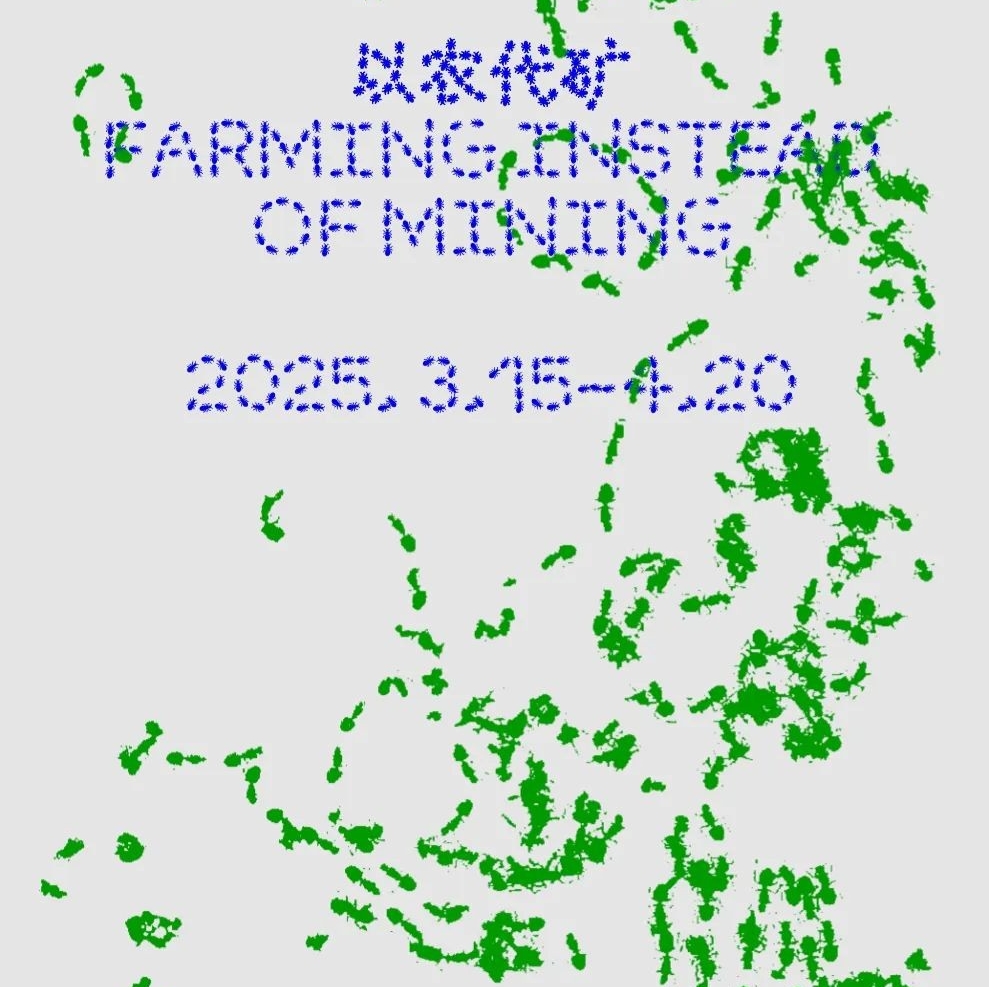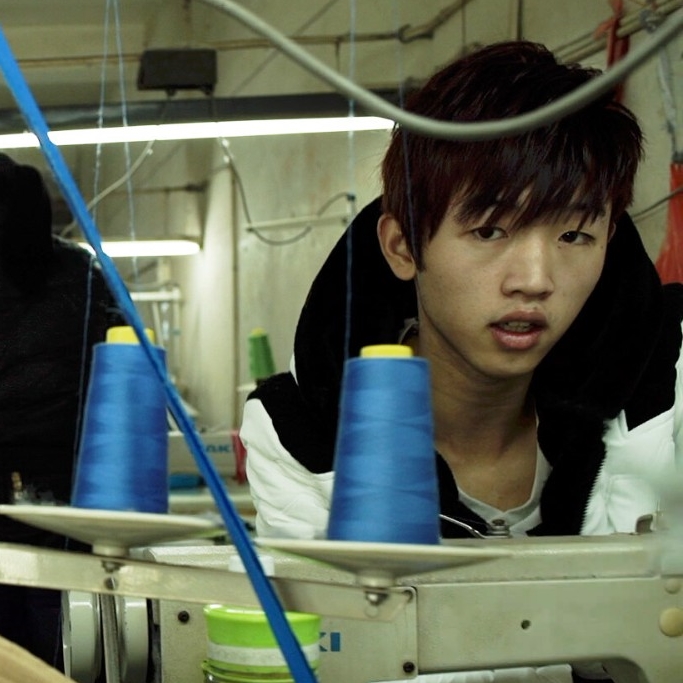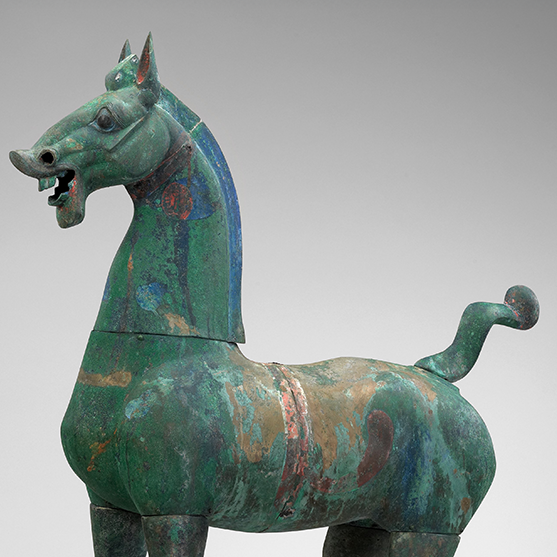About Eight Great Sights of Beijing
by Wang Chuan on Jun 2nd, 2009
The responsibility of an artist is to give thoughts to his time and responding in his own way with artistic means, enriching the visual aesthetic experience of mankind or revealing some kind of positive meaning in life. Such artistic practice is, at the same time, an exploration as well as discovery of the media used by the artist.
As a growing modern metropolis, for every change it experiences, Beijing can never break away from the links to its long and rich history. Such links are incorporated in all the aspects of politics, economy, ideology and social life. The more radical the changes are, the easier such links are to be appreciated. As a result, I am frequently trapped in a rather conflicting situation: while recognizing those new things as well as changes brought about by the social development, I cannot help feeling confused about the changes accompanying such development. Many things that used to help us find the links between the outside world, the past and ourselves are disappearing or being replaced. Though I live in this city, it seems that I have not become more familiar with it as time passes by; instead, I am obsessed with a kind of strangeness time and again. And the psychological recognition and emotions accumulated in years have emerged too. The sceneries filled with history and specific meanings are either diminishing quickly or existing in a super realistic and isolated manner—separated from our life, or existing in real life without its original meaning. However, we still coexist with them, or even enjoy them.
From Zhuang Zong of the Jin Dynasty (1168-1208A.D.) to Qianlong Emperor of the Qing Dynasty (1711-1799A.D.), emperors designated, modified and finally determined eight sights in Beijing as the best ones in their eyes to represent the temperament and verve of the city and to most agree with the regal aesthetic standards—the Eight Great Sights of Beijing, which are both familiar and strange to us. Qianlong Emperor even set up stone memorials with poetry for them, conveying the regnal confidence in politics and culture. All these can be found in the historical record of Beijing and regarded as some kind of summarization of Beijing as well as clues to interpreting this ancient city. However, when I truly come to meet these sights, I am more attracted by the great discrepancies between their manner of existence in real life and the historical description of them than I am interested in the sceneries themselves, so I am impelled to find a way of expression.
The camera can always separate personal choice from complicated realities, giving special meaning to these pictures. Pixel, the basic image element of today, is characterized by definite timeliness, turning it from a physical concept or technical term into a picture language, by means of which I am able to escape from the double temptation of realistic details and historical restoring towards photographing and turn to face my personal feelings directly. From the objects themselves to the language of picture elements constituting the works, our vision is wobbling between a kind of déjà vu and an uncertainty formed by the images deprived of details. I would like to know whether other people would experience the same familiar as well as strange observations and my helplessness and concession. If I can receive the response in their hearts, then these personal feelings would belong to more people living in this city and to this age as well.
About the Writer
Wang Chuan, born in Beijing in 1967, graduated from the Department of Book Art of the Central Academy of Art and Design in 1990 and got a master's degree in the joint program Master of Arts in Visual Art (Photography) cooperated by China Central Academy of Fine Arts and the Queensland College of Art of Griffith University, Australia in 2000. He is head of the Department of Photography of the School of Design of China Central Academy of Fine Arts, and has held photographic exhibitions in China as well as in the U.S., Italy, UK, Australia, Austria, etc.
For further information, please contact info@pekinfinearts.com or call 8610-5127 3220
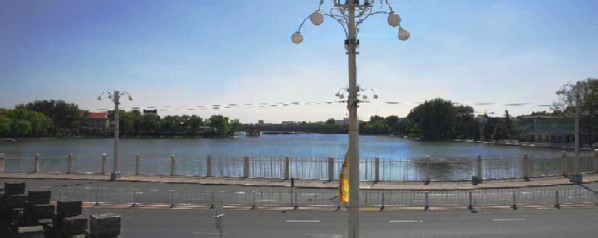
8 Great Sights-1-The Autumn Winds on Taiye
Sidelight of the Artist:
Though the guards on the bridge to the south of Beihai Park will not interfere with people coming here to overlook the silent water that joins the water of Beihai, photographing is not allowed. Most of the passers-by know that it is Zhongnaihai over there, a place not for appreciation, so they naturally follow the rule. Standing on top of Tuancheng (the Round City) in the Beihai Park, though the Lake of Taiye--the Autumn Winds on Taiye, one of the Eight Great Sights of Beijing—can be seen across the bridge, the traffic and crowds before me only make me feel some kind of remoteness, abstractness, and the interchange between history and reality. Fortunately, my camera is able to catch a quiet moment in such heavy traffic, transforming it into the image I want, from which we may even get a slight poetic feel of Emperor Qianlong.
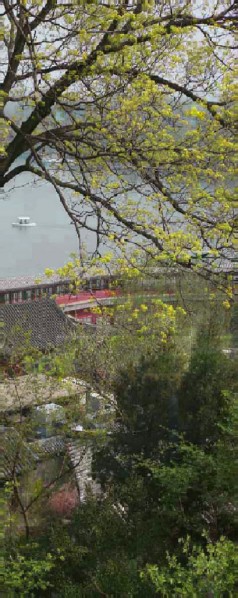
8 Great Sights-2-Jade Islet in Shady Springtime
Sidelight of the Artist:
On the Jade Islet in shady springtime, I feel a familiarity beyond description, which is in sharp contrast to my cautiousness when appreciating the Western Hills Shimmering in Snow. Standing on the Jade Islet in spring wind, every one may have his or her own picture of the Jade Islet in Shady Springtime. Before us is the Platform of Immortal Receiving Heavenly Dew, featuring a north-facing bronze figure holding a plate high above his head. It came near to destruction during the Cultural Revolution, and the chasm on the white marble base is still visible.
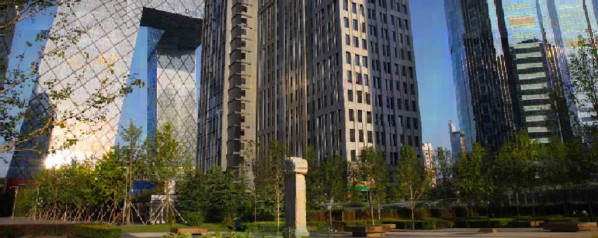
8 Great Sights-3-The Golden Terrace in the Glow of the Setting Sun
Sidelight of the Artist:
If it were not for the stele set up by Emperor Qianlong, who would ever relate the center of CBD to the charming history of Beijing or to the royal aesthetic standard? However, to my surprise, the station name of the new subway built for the Olympic Games clearly tells us that the “Golden Terrace in the glow of the Setting Sun” is right here. At sunset in autumn, there are fancy lights refracted from the glass on the surrounding buildings and people hurriedly walking past the stele. In dizziness and the flicking of lights, I am caught by weightlessness after losing historical references. Not a trace of the imaginary historical feeling is to be felt notwithstanding the perfectly intact stele. It does not matter however, for it seems like it’s a time tunnel in the movie, bringing more surprises and preposterousness to us for our patient observation.
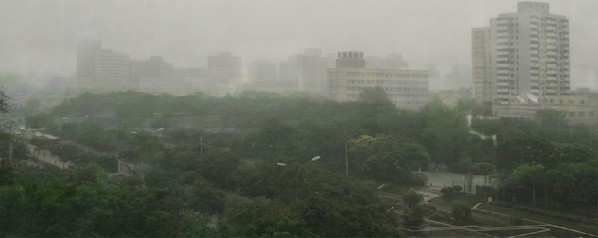
8 Great Sights-4-Trees Enveloped in Mist at the Ancient City of Jizhou (West Tucheng)
Sidelight of the Artist:
Initiated from my personal emotions and interests toward Beijing, this is my first attempt in rediscovering this metropolis in which I have been living for dozens of years. I had a strong urge to represent such wish and personal experience in the form of artworks. Although I had been researching, thinking and imagining for a long time, the real scenery was still more than I had expected. Time has changed, but this scenery is still the one that most matches my imagination. The smoke, the trees, the stele and the pavilion all being in the misty rain, when I stand on the roadside high-rise at such a moment, the view in front of my eyes comes a little closer to my old dreams. Of course, those shadowy high-rises and the traffic have to be ignored.
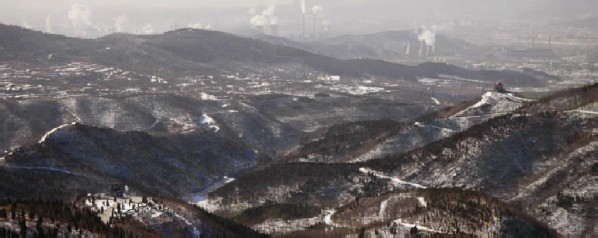
8 Great Sights-5-The Western Hills Shimmering in Snow
Sidelight of the Artist:
I once thought that the Western Hills Shimmering in Snow would be the most ready sight, but I was wrong. The climate in Beijing quietly changed in recent years, which almost made me desperate in the winter of 2009. Previously, although it snowed much less in Beijing than before, I had never been so desperate about snowing in Beijing. Unfortunately, this winter went on for more than 100 consecutive days without snowing, suddenly making the Western Hills Shimmering in Snow a legend out of my reach. Though by magic luckiness the only snowfall in this winter finally saved me on the brink of breakdown, enabling me to shoot the classic Western Hills Shimmering in Snow in the few hours when it was in the sunshine, my lingering fear persists. In the distance, where temples used to stand in great numbers, there are only the rising clouds coming out of the chimneys of Capital Steel Mill in the sight. It is said that soon the Capital Steel Mill will be removed completely from there too, just like those temples used to be, which seems to mean that we may be able to enjoy purer sceneries. But God knows how long we shall have to wait for a snowfall by then!
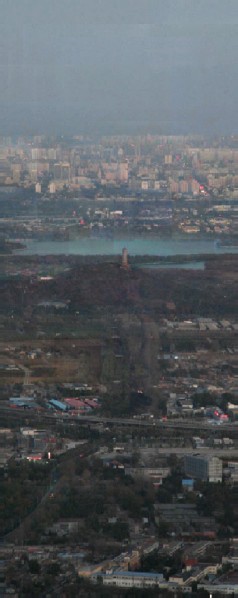
8 Great Sights-6-The Rainbow Floating over the Jade Spring
Sidelight of the Artist:
For most of the people living in Beijing, the Jade Spring Mountain is nothing more than an abstract and prohibitive figure in the western suburbs of Beijing. I saw her during my first spring outing in primary school, and now dozens of years have passed, she still stands there calmly. To the time I came to know about the Eight Great Sights of Beijing, I had already known that it is a forbidden place, so I paid little attention to it for some time. But this time it is quite different. Standing on the Censer Peak and overlooking her, I suddenly feel that she is so lonely and isolated. Her being is history itself. Unlike wandering outside the fence at the foot of the Jade Spring Mountain, such remote communication makes me feel closer to her. I even feel that if I were actually allowed to go in there, I would probably become lost.
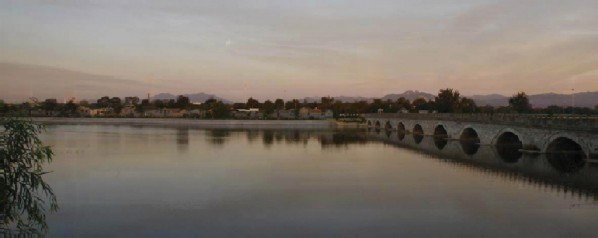
8 Great Sights-7-The Moon over the Lugou (Marco Polo) Bridge at Dawn
Sidelight of the Artist:
In the past 20 years, there was no water in the Yongding River, and the Moon over the Lugou (Marco Polo) Bridge at Dawn, like other sights, had been gradually driven out of our minds. This might be part of the reason for never thinking of going to see it in person for many people, including me. Recalling the dry and ruined riverbed I came across before, I cannot help being grateful to the Olympic Games again! With the moon reflected in the silent water at dawn, everything becomes gentle as well as exciting again. Suddenly I understand why the scene of “the Moon over the Lugou (Marco Polo) Bridge at Dawn” had been barely known for years. It was only because there was no water in the Yongding River. Now the water and moonlight are both back, but the old scenery and the things we wanted to keep are nowhere to be found.

8 Great Sights-8-The Great Wall Surrounded by Lush Greenery at the Juyong Pass
Sidelight of the Artist:
The Juyong Pass was claimed to be the lock of the capital area, the portal on the north of Beijing, always being an important military site. The great admiration of past Emperors for the green mountains here was mostly out of their appreciation of the virility and arrogance embodied in this scenery. However, if one wants to appreciate such temperament today, he not only has to have some historical knowledge but also should have the ability to overcome or ignore the reality before him, for the awesomeness of the great pass with lush greenery has already been destroyed by the running artery traffic, the coming and going cable cars and the footsteps of the tourists. Standing on the hill and overlooking the great pass of the old days, I always have the illusion that I am looking at a miniature garden. Of course, if you are completely ignorant of the Eight Great Sights of Beijing, you will not have these troubles. Anyway, this is only part of the Great Wall scenery, a place to take photos as a remembrance.

